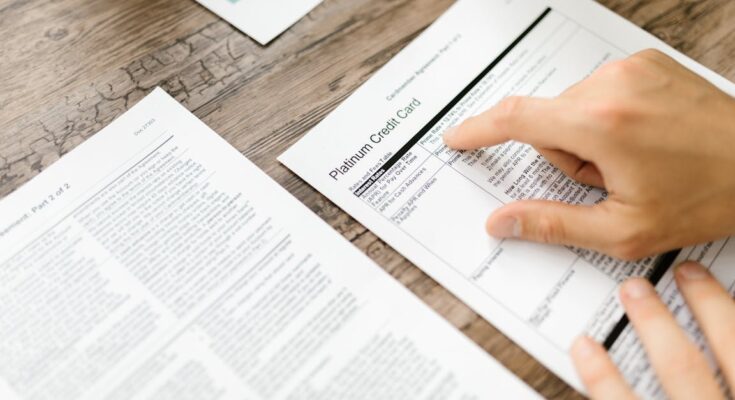Ever felt that little sting when you check your bank balance, and it’s lower than you expected? Sometimes, it’s because of those sneaky little charges that pop up out of nowhere. These are often called hidden bank fees, and frankly, nobody likes them. They can chip away at your hard-earned money without you even realizing it. It’s like finding extra charges on a restaurant bill you didn’t order! You work hard for your money, and you deserve to keep as much of it as possible. So, what are these fees, why do banks charge them, and more importantly, how can you dodge them? That’s exactly what we’re going to dive into right here. By the time you’re done reading, you’ll be a pro at spotting these fees and keeping your cash safe in your account.
Know Your Account’s Rules
Think of your bank account like a game, and every game has rules. With bank accounts, the rules usually involve things like how much money you need to keep in it or how many times you can take money out without a charge. Banks have different types of accounts – maybe one is good for saving, another for spending. Each type has its own set of fees. For example, a checking account might charge you a monthly fee if your balance dips below a certain amount, like $100. Or maybe a savings account has a limit on how many times you can transfer money out in a month. Imagine you picked an account because it seemed easy, but you didn’t realize it charges you $5 every month if you don’t have $500 in it. If you usually keep less than that, bam! That’s $60 a year just disappearing. Knowing these specific rules for *your* account is the very first step to avoiding those unexpected charges.
Read the Tiny Print (The Fee Schedule)
Okay, nobody enjoys reading long, boring documents. Bank fee schedules can feel like that. But seriously, this is where the bank tells you about ALL the ways they might charge you. It’s like the instruction manual for avoiding fees. They list stuff like monthly service fees, ATM fees, overdraft fees, wire transfer fees, and even fees for using a teller too much! It might seem overwhelming, but knowing what fees exist is half the battle. For instance, you might find out they charge $2 for every time you use an ATM that isn’t theirs. Yikes! Just knowing that can change how you get cash. Take a deep breath and skim through it. Or better yet, look for a simple list of common fees on their website. Knowing the potential traps helps you steer clear of them.
Sidestep Those Pesky Monthly Fees
One of the most common fees is a monthly maintenance fee. It’s basically the bank charging you just for having the account open. But here’s a secret: most banks offer ways to avoid this fee. The two usual ways are either keeping a certain minimum balance in the account all the time (like that $500 example we talked about) or meeting specific activity requirements, like having your paycheck directly deposited or making a certain number of debit card transactions each month. Let’s say your bank waives the $10 monthly fee if you make at least 10 debit card purchases. Instead of using cash for small things like coffee or snacks, using your debit card ten times throughout the month could save you $120 a year! Check what your bank’s requirements are and see if you can easily meet one of them.
Don’t Fall into the Overdraft Trap
Overdraft fees are probably the most frustrating fees because they happen when you least expect it, often when you’re already low on funds. An overdraft happens when you spend more money than you actually have in your account. The bank might cover the purchase for you, but then they hit you with a big fee – sometimes $30 or more – just for being overdrawn, even if it was only by a few cents! Imagine buying a $3 coffee but only having $2.50 in your account. That coffee could end up costing you over $30! To avoid this, you have options. You can tell your bank NOT to let you overdraw your account with your debit card (it might decline the transaction instead). You can link your checking account to your savings account so money automatically transfers if needed. Or, set up low balance alerts on your phone so you know when your account is getting low before you accidentally overspend.
Beware of Out-of-Network ATM Charges
Need cash? Using an ATM from your bank’s network is usually free. But if you use an ATM from a different bank, you might get hit with not one, but two fees! Your bank might charge you for using an outside ATM, AND the owner of that ATM will likely charge you a separate fee just to get your money out. Suddenly, taking out $20 could cost you $5 or more in fees. Ouch! A simple way around this is to plan ahead and get cash from your bank’s ATMs. If you’re at a store, ask for cash back when you make a purchase with your debit card – most stores let you do this for free, and it saves you a trip to an ATM altogether.
Keep a Close Watch on Your Money
You wouldn’t drive a car without looking at the gas gauge, right? The same goes for your bank account. Regularly checking your balance is one of the best ways to avoid surprise fees. With online banking and mobile apps, it’s super easy to do this anytime, anywhere. Check it a few times a week, or even daily if you’re making a lot of transactions. This helps you know exactly how much money you have, so you don’t accidentally overspend and trigger an overdraft fee. Setting up those balance alerts we mentioned earlier is also a fantastic way to stay informed without constantly checking the app. Staying aware is your superpower against hidden fees.
Don’t Be Shy About Asking or Switching
Sometimes, despite your best efforts, a fee might show up. If it’s a first-time fee, especially an overdraft, it’s worth calling your bank and politely asking if they’ll waive it as a courtesy. Banks want to keep you as a customer, and they might be willing to help, especially if you have a good history with them. Explain what happened and ask nicely. It doesn’t always work, but it’s worth a try! If you find that your current bank is constantly charging you fees or their rules are too hard to follow, maybe it’s time to look for a different bank or credit union that’s a better fit. Plenty of places offer accounts with fewer fees or easier ways to avoid them. Sometimes, making a change is the best way to save money in the long run. Services exist that can help you compare different options or manage your money in ways that automatically help you steer clear of these charges.
So, there you have it! We’ve gone over some of the most common hidden bank fees and, more importantly, simple ways to avoid them. It all starts with understanding the rules of your specific account and taking a peek at that fee schedule (yes, even the boring parts!). Then, it’s about being mindful of things like minimum balances, steering clear of overdrafts by using alerts or linking accounts, and sticking to your bank’s ATMs. Keeping a regular eye on your account balance is key – think of it like keeping tabs on your points in a game! And remember, if a fee does slip through, it never hurts to ask your bank if they can help you out. By taking these steps, you’re not just avoiding annoying fees; you’re taking control of your money and making sure it stays right where it belongs – with you!




